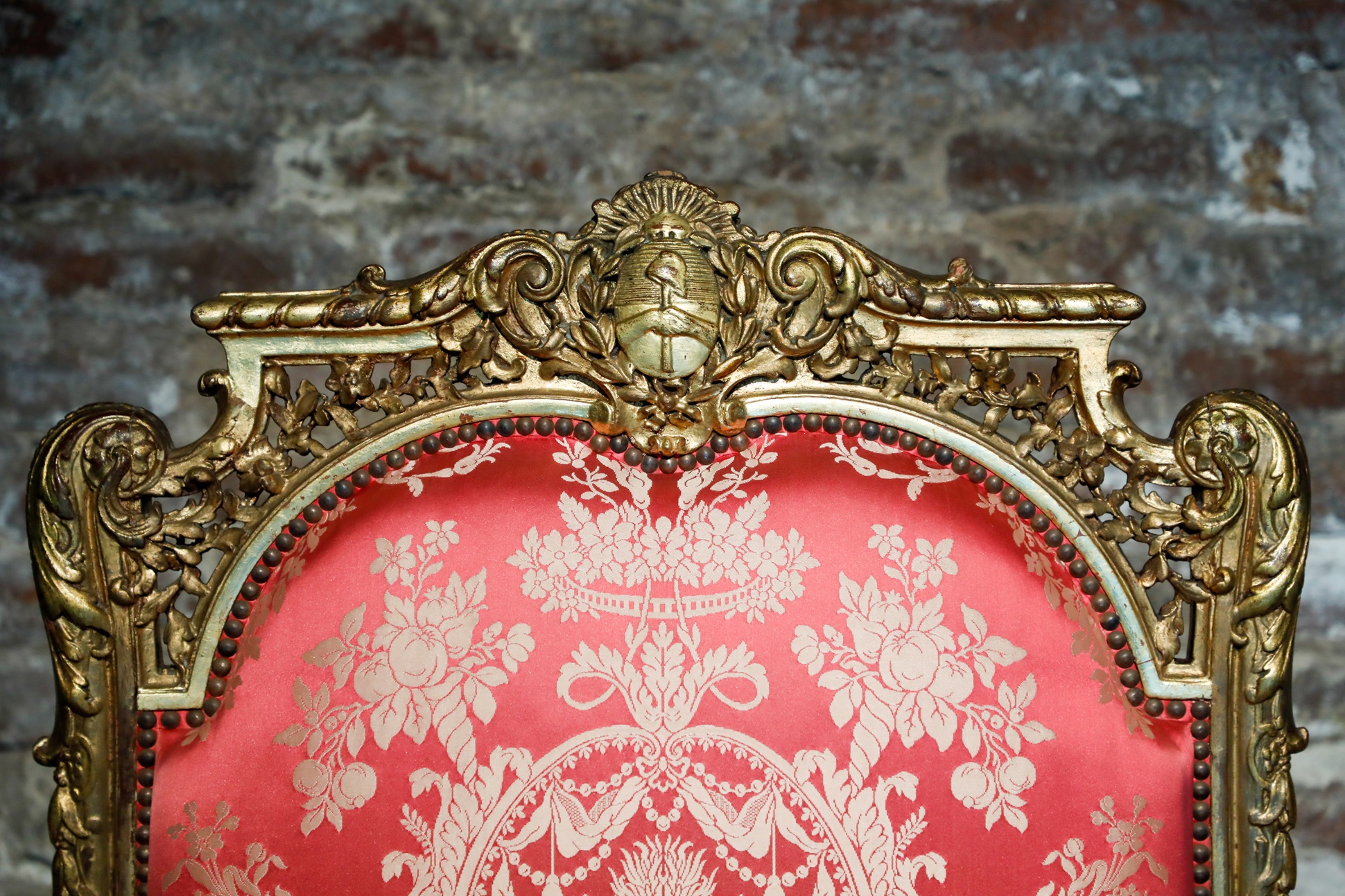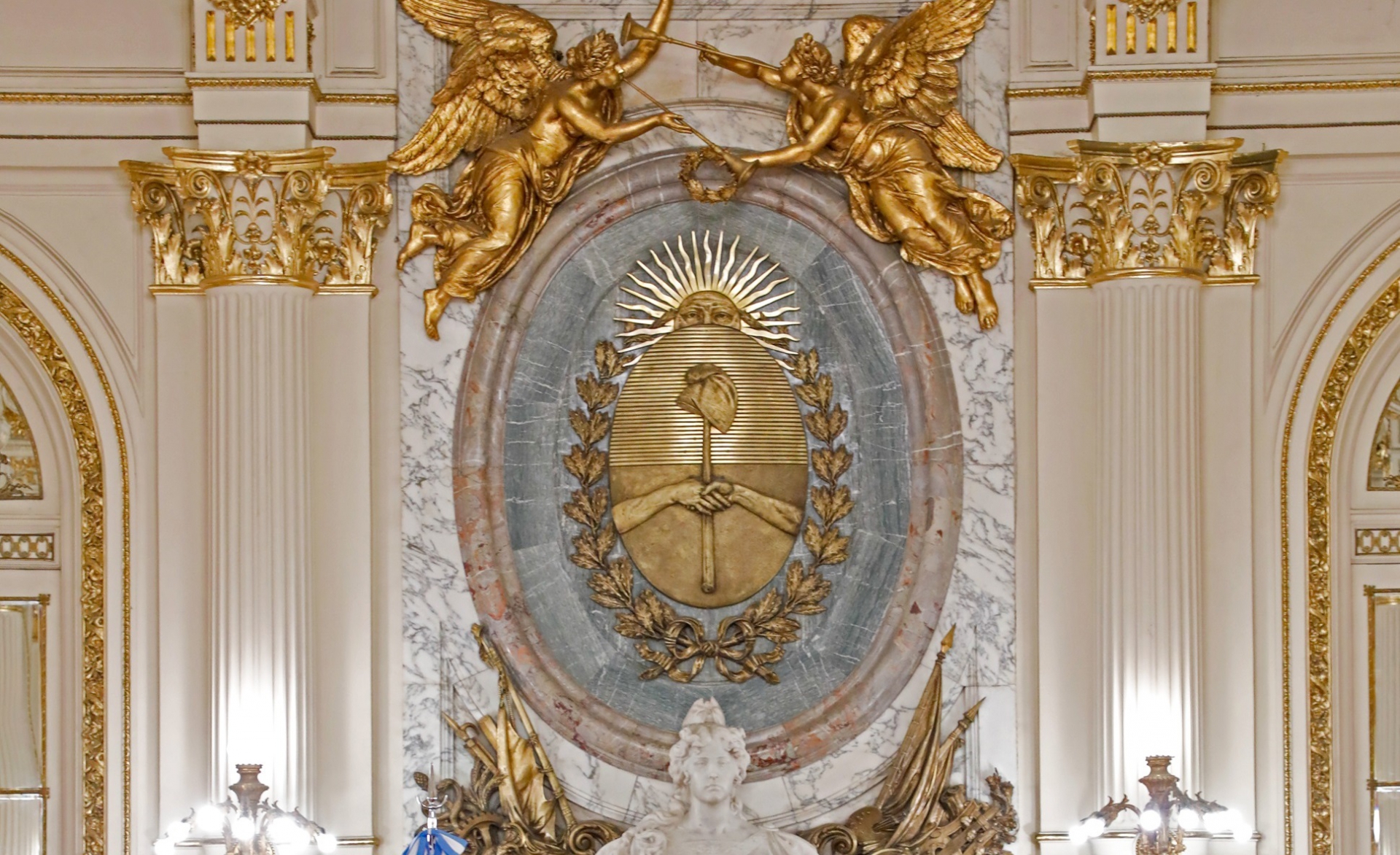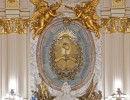Día del Escudo Nacional: Símbolo de identidad, independencia y libertad.
— Casa Rosada (@CasaRosada) March 12, 2024
Hoy, conmemoramos con orgullo el 211º aniversario de nuestro Escudo Nacional. Este emblema, creado por nuestros próceres, encarna los valores de nuestra identidad y la historia de nuestra Nación.… pic.twitter.com/eXvNOPGlrP
Every 12th March, the Day of the National Emblem is celebrated in our country, in commemoration of its creation and declaration as a national emblem in 1813. The Argentine Coat of Arms is a faithful reproduction of the Seal used by the Sovereign General Constituent Assembly of the United Provinces of the Río de la Plata, also known as the Assembly of the Year XIII.
Before the establishment of the Assembly of the Year XIII, the Viceroyalty used the royal arms as a seal on official documents. However, the need to have its own distinctive emblem led to the creation of a new insignia, giving rise to the current Argentine Coat of Arms.
There are no sources that certify the origin of the Coat of Arms. One version attributes the design to Antonio Isidro de Castro; another to Bernardo de Monteagudo. The design has notorious similarities with a coat of arms used during the French Revolution, which allows us to suppose that the model was taken from there.
Manuel Belgrano, one of our heroes, used the Coat of Arms as the central symbol of the emancipating troops, thus contributing to its recognition by towns and provincial governments as a representation of the incipient Argentine State.
In 1944, the National Executive Power made official the adoption of the seal of the Assembly as a representation of the Argentine national emblem, giving it uniformity.
Description and Symbology of the National Emblem
With a cut oval shape, its design presents an upper field of blue and a lower field of white. In the lower quarter, two human forearms clasp each other, symbolising the union of the peoples of the United Provinces of the Río de la Plata.
The Phrygian cap, an ancient emblem of liberty, stands out, held by a pike suggesting a readiness to defend that liberty with arms if necessary. The rising sun, with its twenty-one flaming rays, announces to the world the emergence of a new Nation.
Two laurel branches, without fruit and without intertwining at the top, surround the ellipse of the shield. These leaves, with specific numbers on each side, are heraldic symbols of victory and triumph, reflecting the glories already achieved on the battlefields.
At the tip of the shield, a ribbon in the form of a ribbon with the blue and white colours, characteristic of the Argentine flag, pays homage to the nationality of the country.
As a whole, the Argentine national emblem is a work of symbolism, which reminds us of the importance of unity, freedom, victory and national identity in the history and spirit of the nation.
The National Emblem, witness to history in the Casa Rosada.
Several objects in the Government Palace carry with them this patriotic symbol that highlights its presence in different spaces.
In the White Hall there is a sculpture representing the bust of the fatherland, which stands out for the majestic presence of the National Emblem. Made of bronze and delicately placed on marble of various shades, this emblem rises above the patriotic figure. Two angels in patinated wood, whose hands hold trumpets of glory, crown the ensemble. This ornamentation was purchased from the Maison Forest in Paris.
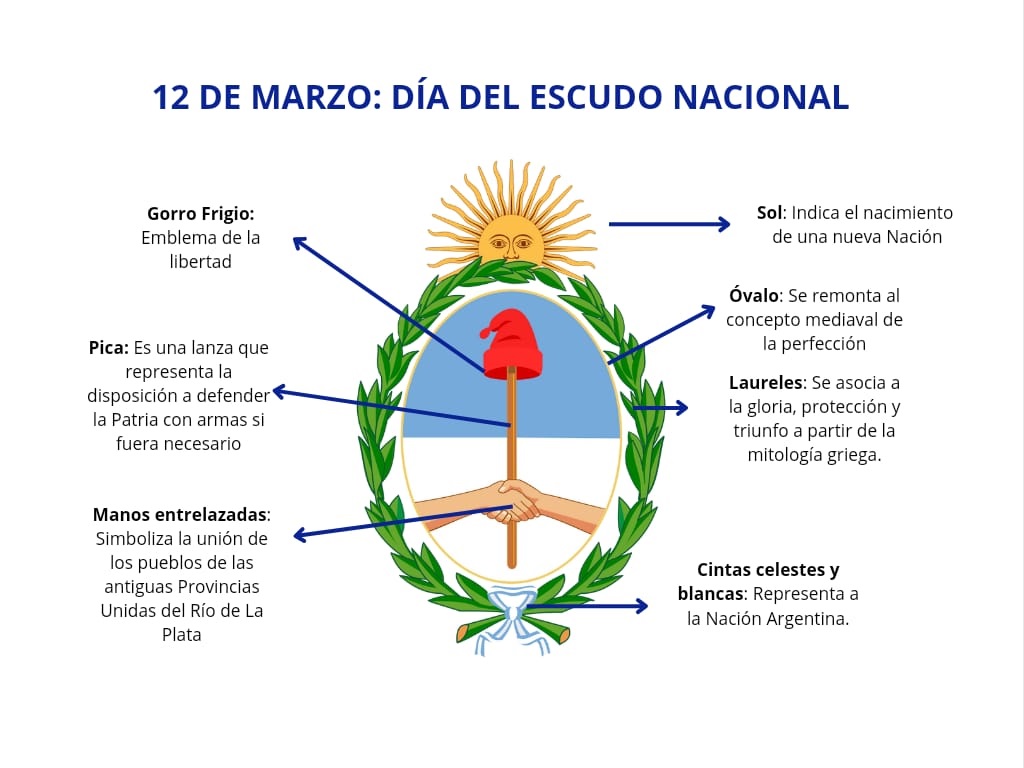
In the Casa Rosada Museum, a painting is on display that reveals the old Coat of Arms of the Argentine Confederation, used from the time of Rosas until 1862. Embroidered with metallic threads on satin and silk velvet, it shows a full-faced sun, surrounded by 14 flags representing the provinces of the time, with two cannons on the back. Oral tradition has it that it was the work of the patrician ladies of Entre Ríos, given as a gift to General Justo José de Urquiza.
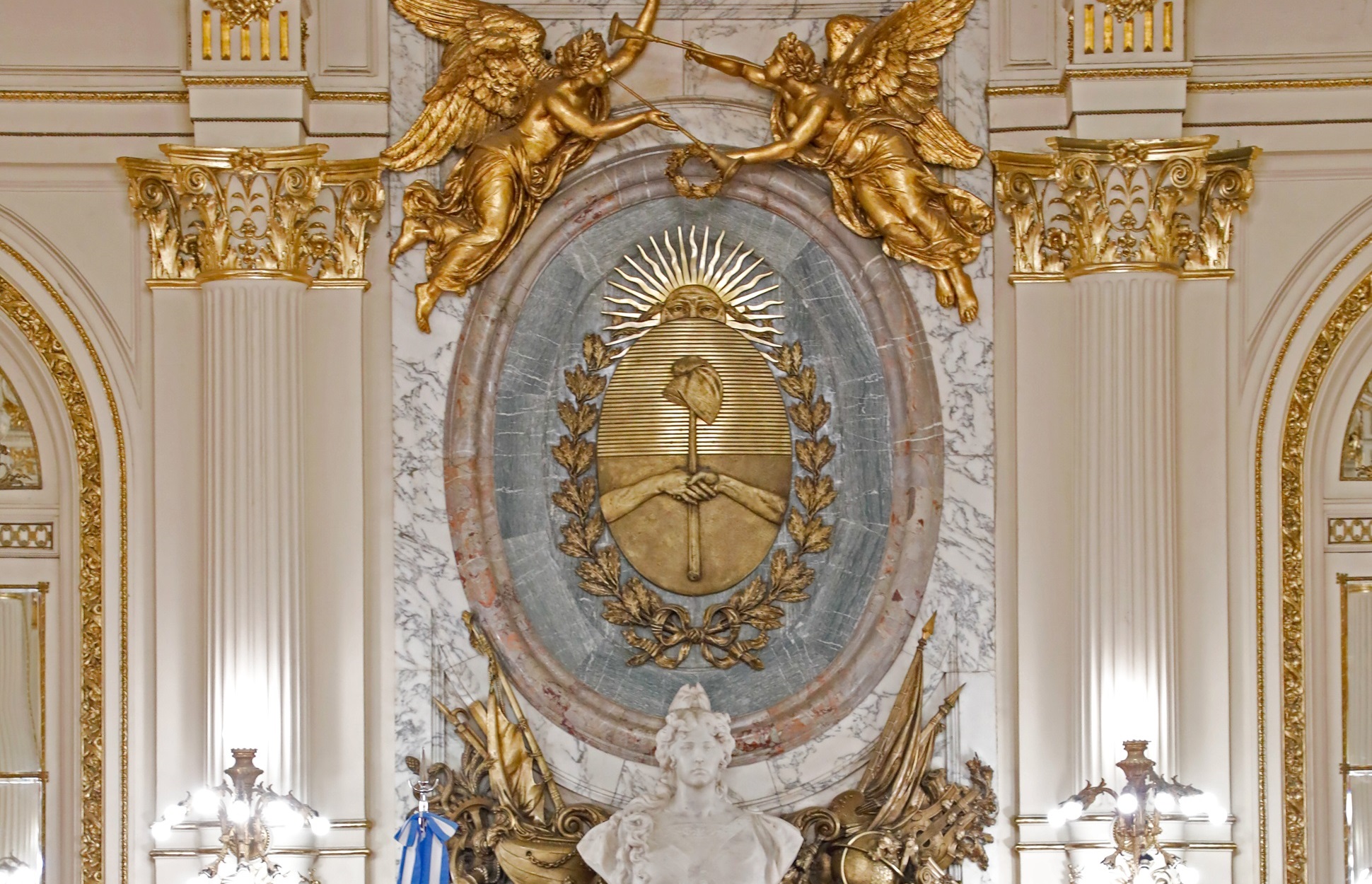
Presidential furniture also pays homage to the national emblem. In the Museum, a desk belonging to President Nicolás Avellaneda has the emblem carved on its doors, showing the eclectic style of the period. Likewise, a French-made armchair, used by all presidents between 1900 and 2011, displays the National Emblem on the upper part of the backrest, marking the distinction of the President's seat.
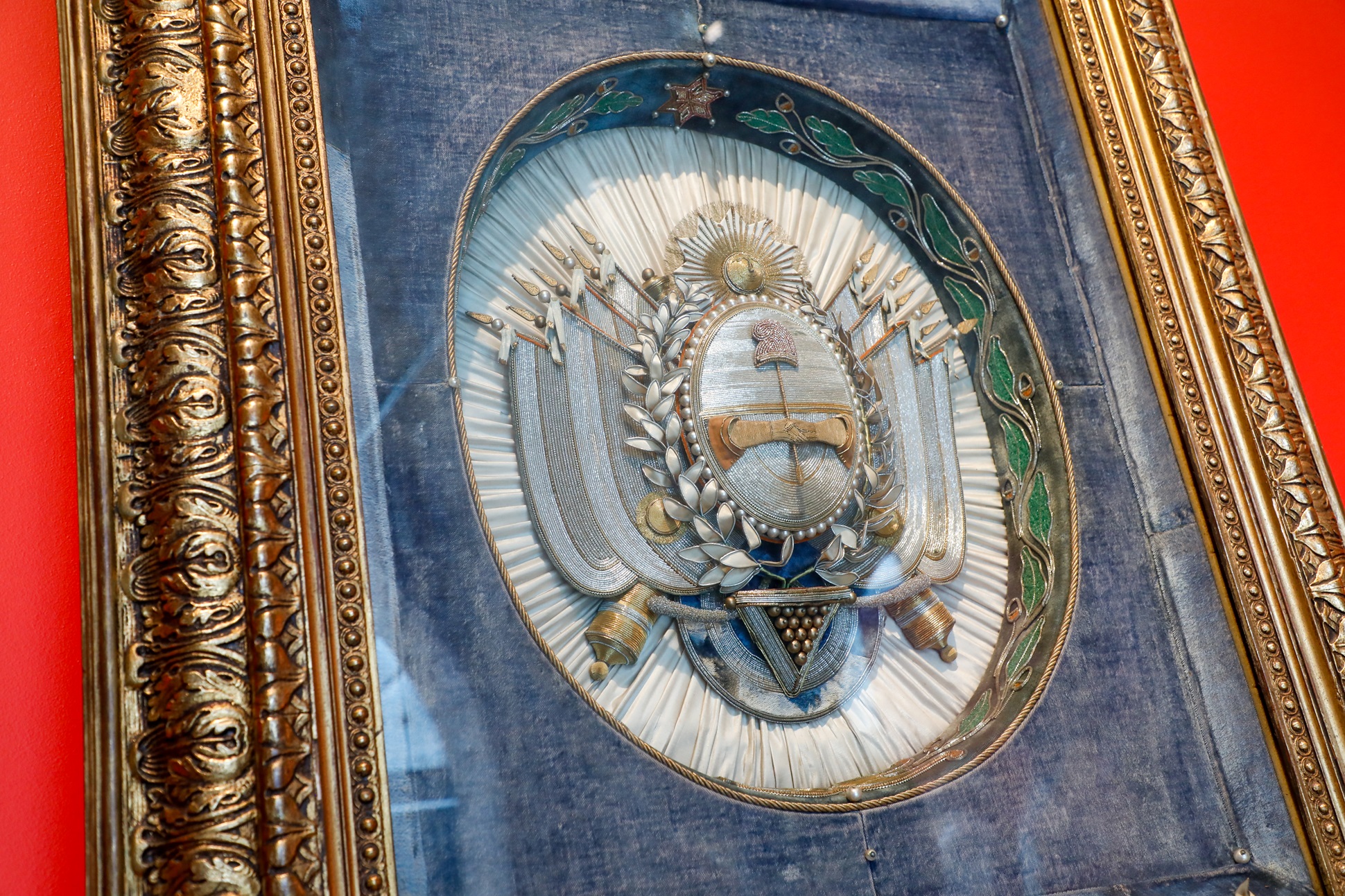
These symbolically charged objects reinforce the importance of the national emblem as an emblem of identity, independence and freedom.
